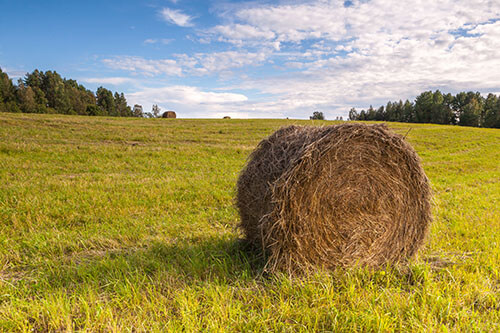What is Nitrate Poisoning?
Nov 30, 2020

Nitrate poisoning occurs when animals consume hay containing high levels of free nitrates. Under drought conditions, both sorghum X sudangrass hybrids and pearl millet have the potential to accumulate high levels of nitrates, especially if they have been fertilized with nitrogen.
Animals suffering from nitrate poisoning often exhibit labored breathing, muscle tremors, and staggering. Membranes of the eyes and mouth are bluish because of the lack of oxygen, and death can occur relatively quickly.
Prevention is key! Nitrate toxicity is the most common toxicity during a drought, and the chances for high nitrates are increased if the crop has been fertilized with nitrogen. Avoid fertilizing summer grasses with nitrogen if you don’t have adequate moisture for growth. Don’t cut or graze the crop until it starts to grow after a rain. If you have any suspicions that nitrate levels may be high, contact your local Extension office for information about getting forage tested for nitrate levels. Prevention is best — test your hay!
Animals suffering from nitrate poisoning often exhibit labored breathing, muscle tremors, and staggering. Membranes of the eyes and mouth are bluish because of the lack of oxygen, and death can occur relatively quickly.
Prevention is key! Nitrate toxicity is the most common toxicity during a drought, and the chances for high nitrates are increased if the crop has been fertilized with nitrogen. Avoid fertilizing summer grasses with nitrogen if you don’t have adequate moisture for growth. Don’t cut or graze the crop until it starts to grow after a rain. If you have any suspicions that nitrate levels may be high, contact your local Extension office for information about getting forage tested for nitrate levels. Prevention is best — test your hay!